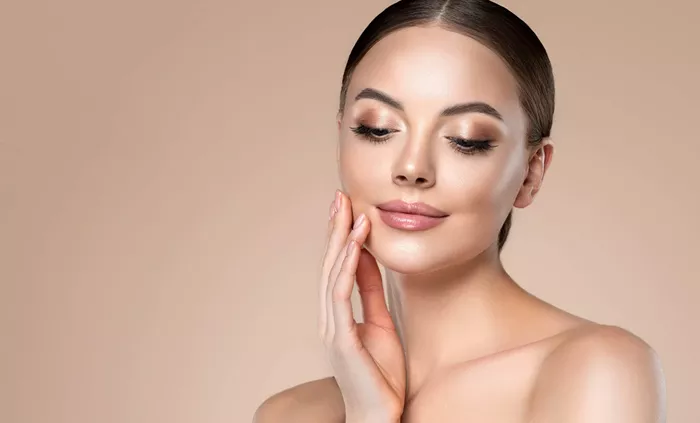A round face usually has soft, curved lines. The width and length of the face are nearly the same, and the cheeks are often full. This gives the face a youthful and friendly appearance. However, some people with round faces may feel their features lack definition. They may want a more sculpted or balanced look.
Dermal fillers can help. They can add shape and definition without surgery. When used correctly, fillers can enhance natural beauty while keeping the face looking soft and natural.
What Are Dermal Fillers?
Dermal fillers are gel-like substances injected into the skin. They are commonly made of hyaluronic acid, a substance that is naturally found in the body. Fillers can add volume, smooth lines, and improve facial contours.
There are different types of fillers. The most popular ones include:
- Hyaluronic Acid (HA): Brands like Juvederm, Restylane, and Belotero fall into this category. HA fillers are smooth, flexible, and reversible.
- Calcium Hydroxylapatite (CaHA): Found in Radiesse, this filler is thicker and often used for deeper wrinkles or adding volume to cheeks.
- Poly-L-lactic Acid: This is a biostimulatory filler that helps the body produce more collagen over time. Sculptra is a well-known brand.
- Polymethylmethacrylate (PMMA): These are semi-permanent fillers. Bellafill is one example.
Most fillers used for shaping a round face are HA-based because they are safe, easy to mold, and provide natural-looking results.
Why Use Fillers for a Round Face?
People with round faces often want more angles or definition. Fillers can:
- Add height to the cheekbones
- Create a sharper jawline
- Define the chin
- Slim the appearance of the face
These changes can make the face look more oval or heart-shaped. Fillers can help balance facial features while keeping a soft, natural look.
Best Filler Areas for a Round Face
1. Cheekbones
Adding filler to the cheekbones gives the face more lift. High, defined cheeks help create a more sculpted appearance. This draws the eye upward and away from the fullness in the lower face.
2. Chin
A slightly pointed or projected chin can help lengthen the face. This helps reduce the round appearance. Chin filler is often subtle but very effective.
3. Jawline
Defining the jawline creates a clearer separation between the face and neck. A well-shaped jaw gives the face structure and makes it look slimmer. This is especially helpful for people who feel their face looks “puffy” or undefined.
4. Temples
Full temples can balance the upper face. Sometimes, volume loss in this area makes the face look rounder. Filler in the temples can add harmony to the facial shape.
Treatment Process
Consultation
Every treatment starts with a consultation. A trained injector will examine your face, talk about your goals, and suggest the best approach. Photos may be taken to plan the treatment.
Injection
The treatment usually takes 30 to 60 minutes. The injector will clean your skin, apply numbing cream if needed, and use a fine needle or cannula to place the filler.
Aftercare
There may be some swelling, redness, or small bruises after the treatment. These usually go away in a few days. It’s best to avoid heavy exercise, alcohol, and touching your face for 24 hours after the procedure.
Results
Results can be seen immediately but improve as the swelling goes down. HA fillers typically last 6 to 18 months, depending on the product and area treated. Maintenance treatments are usually needed once or twice a year.
Safety and Side Effects
Dermal fillers are generally safe when done by a skilled professional. Still, every procedure has risks. Possible side effects include:
- Swelling
- Bruising
- Redness
- Asymmetry
- Infection (rare)
- Allergic reaction (very rare)
Choosing a qualified injector is the best way to reduce risks. Look for someone with medical training and experience in facial anatomy.
Who Is a Good Candidate?
Fillers work well for people who:
- Have a round or soft facial shape
- Want more definition or balance
- Prefer a non-surgical approach
- Are in good health
- Have realistic expectations
Not everyone is a good candidate. People who are pregnant, breastfeeding, or have certain health conditions should avoid fillers. Always speak with a professional to be sure.
Cost of Treatment
The cost of fillers depends on:
- The type of filler used
- The number of syringes needed
- The clinic location and experience of the injector
On average, one syringe can cost between $500 and $800. Most people need 1 to 3 syringes for noticeable changes. A full-face sculpting treatment can cost $1,500 or more.
Combining Fillers with Other Treatments
Fillers can be used alone or with other treatments for better results. Common combinations include:
- Botox: To soften expression lines
- Skin boosters: For hydration and glow
- Thread lifts: For lifting sagging skin
- Laser treatments: For skin tone and texture
These treatments work together to improve facial structure and skin quality.
Tips for Natural Results
- Less is more. Start slow and build up if needed.
- Choose a skilled and honest injector.
- Focus on balance, not just single features.
- Follow aftercare instructions carefully.
- Take time to discuss your goals during the consultation.
Final Thoughts
Dermal fillers can be a great option for those with a round face who want more definition. They offer a safe, non-surgical way to shape the face and enhance natural beauty. With the right technique and a trained professional, fillers can bring out your best features while keeping you looking like yourself—just more refreshed and balanced.
Always do your research, ask questions, and choose a provider you trust. A good injector will help you look your best in the most natural way possible.
Related topics:
5 Best Dermal Fillers for Cheeks
Can Dermal Fillers Effectively Treat Cellulite?
How Long Do Lip Dermal Fillers Last?


